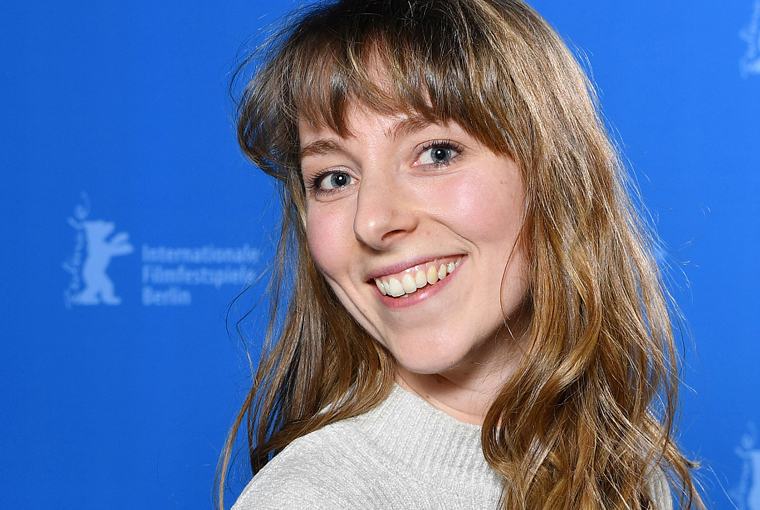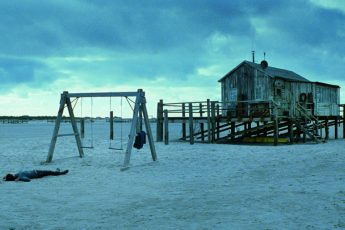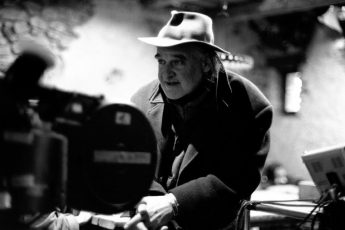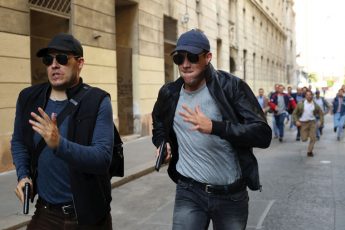
We met Hungarian filmmaker Réka Bucsi during the Primanima Animation Film Festival in Budaörs, Hungary (October 5-8), where she presented her latest short animation “Intermission”. Bucsi talks about the film’s conception, where she finds inspiration, and how the perception of animation filmmaking is slowly changing for the better.
How did you conceive the idea to realize your latest short film and what was your main motivation behind making it?
I was starting to do a lot of abstract experimental animation in 2020. I had done it before, but that is when I started to experiment more actively with it as an exercise and for fun. It was a weird time for me; I didn’t feel like doing much, at least not the usual things. So there was a shift in my approach due to all the things happening that year. I enjoyed not thinking about it too much, to just focus on the movement, colors, and shapes. All these experiments then culminated in this short film.
The initial goal was to have the film be a little break in between short films in a short film selection. For me it would even have been okay if people went out or got a drink while it’s screening. I made it on my own, without a budget, without telling anyone I was working on something new, and without having any big expectations for the film – I was just doing it for the love of it.
I think it works well on a big screen in the context of short film sections. I like the nature of minimalist things blown up on a cinema screen. I just want it to be a pleasant experience for people to watch – that was the main goal.
Music and rhythm seem to play an important role in your short films. Is this especially true for Intermission?
Yes, definitely. The music doesn’t merely support what the images present. The film is a projection of mental images that come to your head when you listen to music. It’s funny because I thought of this and then I rewatched Oskar Fischinger’s Optical Poem and that is basically exactly what the film tells you in the beginning. It feels like a music video, but it’s not a music video because it’s definitely a score for a film that David [Kamp, author of the score] made. It was very much linked to the editing of the film, the movement, and the rhythm of the movement.
You mentioned that abstract animation filmmaker Oskar Fischinger was an inspiration for your work on the project.
Yes. Maybe he is the biggest one. But there are multiple sources of inspiration. I should also mention Adam Backett, one of the greatest animation filmmakers of all times. His technique of creating infinitive loops and cycles is something that I have used in my film as well.
You have previously taken part in the European Animation Exchange Program ASF (Animation Sans Frontières) and been an Artist Resident at the Animation Workshop in Denmark. So you are very internationally oriented and have seen many parts of Europe. That said, in what ways have your personal cultural roots shaped your work as an animation filmmaker?
Hungary has a really rich past of animation, 120 years of history. It’s famous in Europe because there are so many different Hungarian artists that all have their own distinct style – already back in the day, there was all those big names such as Marcell Jankovics.
I liked that spirit in university too, at MOME. Everyone there is doing extremely different things. So I never felt very influenced by being in Eastern Europe. I really like many films from the surrounding countries like Croatia. I think they are very strong in animation history. But my main sources of influence were my peers and the global network of animation filmmakers presenting their work at festivals – because that’s the main platform for animated short films. This is the way you can meet, collaborate and influence each other.
Is the animation community in Hungary close-nit?
Yes, it’s such a small animation community here in Hungary. The studio I work in is a really important space for me. The people there, like Balázs Turai, are really good friends of mine. Zsuzsanna Kreif – who is on the jury for the master’s competition here at Primanima – sits to my left in the studio. Last year, the three of us made a film together. Now Zsuzsi and Balázs are trying to realize a feature film together.
There are a couple of groundbreaking adult animation feature films like Flee [dir. Jonas Poher Rasmussen] from last year. I think it meant a lot to the whole industry that it received three Oscar nominations, because this elevates animation to a new level. The belief that animation is for kids and family is so narrow-minded. Animation is a craft, not a genre, it’s a visual language.
I hope that the world will be more interested in animation for adults outside of Japan – but I think that’s already happening as we speak. Film production companies are now becoming interested in animation. And I don’t know what caused this shift to happen, but I’m very optimistic. That’s why I’m going to the US, I’m moving there in January.
How come that you are moving to the US?
The co-writer for my feature film is American and lives in New York. We are trying to set up an American co-production, because there are a couple of people there that are in fact very interested in the project. They work at film production companies, and I like that idea. Because in this way, an animated feature film could get similar distribution as live action films, since it’s distributed by a live action distribution company. So, I’m trying to find a different route than the classical animation funding route. We’ll see how it goes.
Thank you for the interview.




Leave a Comment